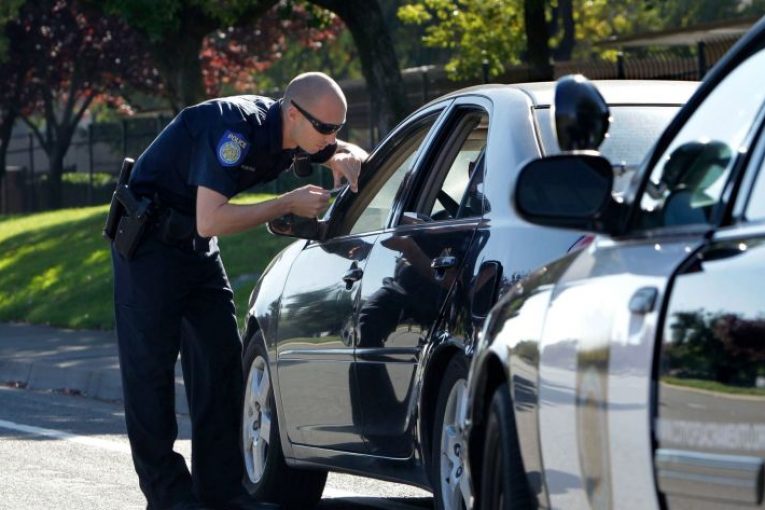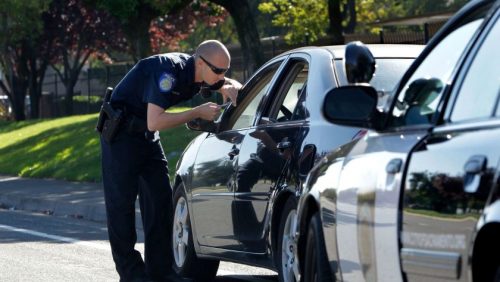

By Perla Brito and Paloma Sifuentes
SACRAMENTO, CA — Black drivers and pedestrians in 2021 continued to be the favorite targets of law enforcement, according to annual data obtained by the CA Dept. of Justice’s CA Racial and Identity Profiling Advisory Board—the report is the nation’s largest and most comprehensive collective effort by all state and local law enforcement.
The report includes an investigation of multiple vehicle and pedestrian stops that occurred in 2021 by 58 different law enforcement agencies in California.
It also includes a comprehensive list of best practice recommendations related to policing. from the impact of pretext stops and law enforcement interactions with youth to civilian complaint processes and training on racial and identity profiling.
Findings from the report showed disparities that were seen in data from previous years such as perceived race, gender, and disability status.
Melanie Ochoa, Co-Chair of the Board and Director of Police Practices at the American Civil Liberties Union of Southern California, said, “In addition to providing a detailed analysis of the policing activities of 58 law enforcement agencies, this year’s report provides much-needed context on the negative physical, emotional, and mental health consequences experienced by students and the broader communities that are most often the subject of those activities.”
Ochoa added, “Coupled with a strong set of evidence-based recommendations to the Legislature, local jurisdictions, and policing agencies, such as an end to pretext stops and consent searches, our hope is that this year’s report will continue to push California towards building communities that are safer for all.”
Steven Raphael, Co-Chair of the Board and Professor of Public Policy at UC Berkeley, said, “Data collected under RIPA provides important information to the public, to legislators, and to law enforcement to guide policy and practice throughout the state.”
California Attorney General Rob Bonta said in a statement, “California remains at the forefront of the nation in examining police stop data. Over the last several years, we’ve collected and analyzed information on nearly 12 million police encounters in our state.
“In turn, with the support of our staff at the California Department of Justice, the RIPA Board has continued to issue thoughtful recommendations for how to strengthen public safety and build trust between law enforcement and our communities. I urge all those interested in supporting constitutional policing in California to read the RIPA Board’s report.”
The data collected includes peace officers’ perceptions of the demographics of stopped individuals to attempt to systematically document and analyze stops and searches to determine whether disparities can be found across demographic groups.
The demographic information includes characteristics such as race or ethnicity, gender, age, disability status, English fluency, and LGBT identity.
The findings from the 2021 police stop data and the fourth year data include:
- Number of Stops: In 2021, 58 law enforcement agencies in California collected data on more than 3.1 million vehicle and pedestrian stops. An 8.4 percent increase from the total number of stops reported in 2020. And 13 of the 18 agencies that collected stop data in both 2020 and 2021 saw a reduction in stops.
- Search Rates: People who were perceived as Black were searched at 2.2 times the rate of people perceived as White. Police officers searched 6,622 more people perceived as Black than those perceived as White. In addition, those perceived to be Black and ages between 15 to 17 years old were searched at nearly six times the rate of those perceived as White youth.
- Result of Stop: Police officers must write down the outcome of a traffic stop such as no action taken, arrest, citation or warning given. In this report Black individuals stopped by officers were reported with an outcome of “no action taken” 2.2 times more than those who were white. This indicates that these Black individuals who were stopped did not engage in any unlawful activity. Additionally Black children and adolescents between the ages of 10 and 17 were detained in a patrol car or on a curb after a traffic stop, more than any other race group.
- Use of Force Rates: Officers used force against Black individuals 2.2 times more than they did white people. With Hispanics, officers used force 1.3 times more than they did with white people.
- Population Comparison: The American Community Survey stop data from 2020 exhibited that white people were underrepresented by four percentage points, and Asians were underrepresented by nine points compared to weighted residential population estimates. While Black individuals were overrepresented by nine points during stops by police officers.
The authors of the report noted that to eliminate racial and identity profiling in law enforcement and improve relationships with officers and the community, the RIPA report lays out several recommendations and best practices to promote evidence based and data driven reforms.
And authors explain these recommendations come from local policymakers, commissions on peace officer standards and training, the board of law enforcement agencies, and the legislature. Some of these recommendations include:
- All stops must be made by officers with reasonable suspicion, or probable cause to eliminate pretextual stops and subsequent searches.
- Ban consent searches or supervision searches during traffic stops by evaluating emerging approaches, and require probable cause for any search.
- Unless there are facts that establish probable cause that a crime has been committed, officers should be prohibited to ask an individual about their patrol, probation, or supervision status.
- Policymakers should take into account, contact with the police and the youth, and add protection to youth prior to waiving any rights, in particular creating safeguards for statements made by adolescents that can be used against them in criminal proceedings.
- Improve the use of force policies by officers and to consider the physical difference between the youth and grown adult officers.
- Adopt a written or signed statement of a civilian complaint and modify or eliminate a requirement in Penal Code section 148.6 “which is a falsely filed complaint of police conduct made by a civilian” this requirement is when law enforcement agencies can obtain a signed advisory and reference penalties before accepting the complaint.
